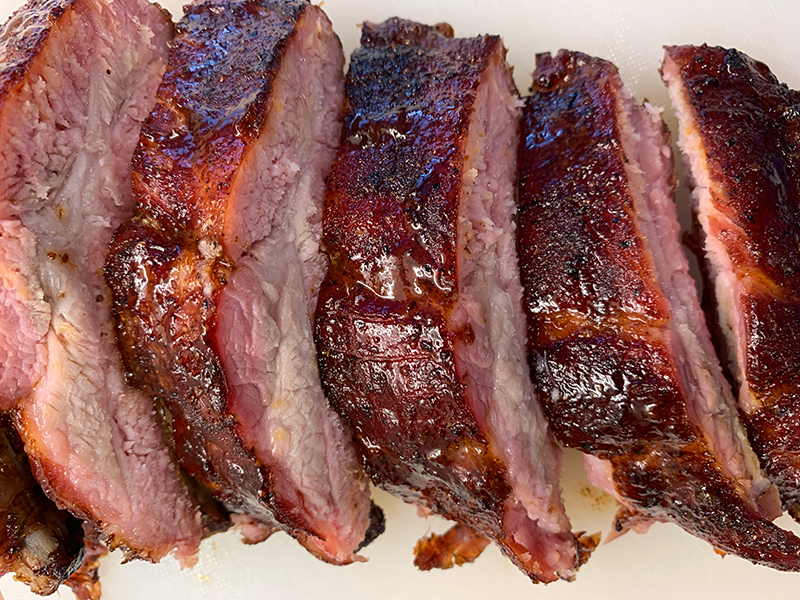
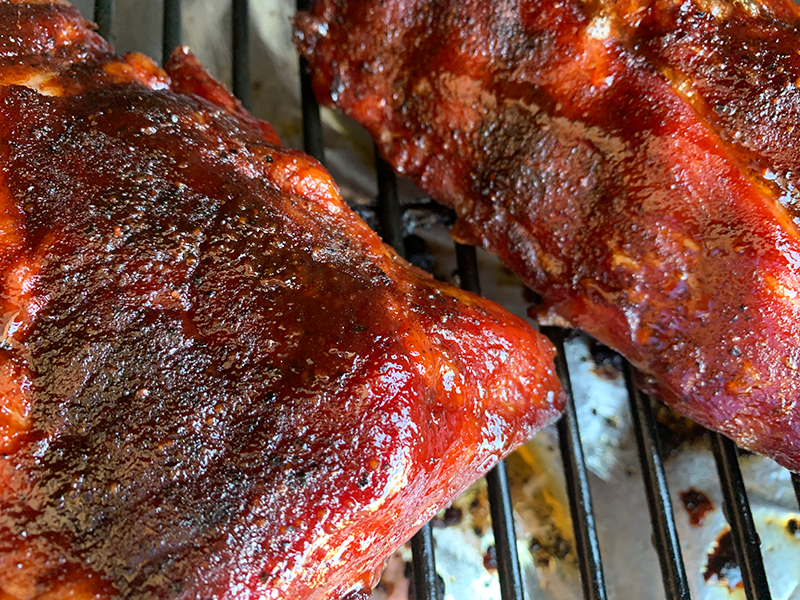
Long time readers appreciate the fact that we’re big fans of grilled and carefully smoked proteins here; I suppose partly due to our Texas heritage and partly due to the unassailable fact that proteins fresh off the grill or from the smoker are almost always outrageously good.
My friends and I cooked our first pork ribs “on our own” in high school while on camping trips around Texas, New Mexico, and Colorado, and had plenty of hometown, old-fashioned barbecue pit masters around to show us how the real deal que was done.
Over the years we’ve grilled ribs, smoked ribs over live fire, on pellet rigs, and even in jury rigged near-smokers on the beach, and even at times resorted to cooking ribs lows and slow in the oven when pressed by weather or time.
I’ve even dabbled with friends in the competition barbecue world off and on, and we began to notice 4 or 5 years ago, along with an army of others, that a trend was developing in the meat smoking world – the pursuit of “fall off the bone tender” ribs, despite the competition smoked rib standard being ribs with a bit more tooth (a key feature being ribs holding their perfect shape when cut into individual rib sections).
As with most things related to health, fitness, nutrition, and cooking, I firmly believe that we all need to experiment with different approaches (particularly with regard to nutrition, fitness, and cooking) to find our own “sweet spot” that works the best for our unique physiologies and taste buds.
Dialing back into the rib issue at hand today, my compadres and I began to see an explosion of recipes calling for a 3-2-1 rib cook – three hours low and slow in a smoker, 2 hours foiled wrap (still low and slow heat), followed by another hour unwrapped and sauced. To my/our way of thinking, that almost always resulted in ribs that were overcooked and mushy; sure, when you picked up a rib or part of a rack by the bone the meat would fall away, but the texture was frankly off-putting.
At the other end of the spectrum, having dried out dozens (if not hundreds) of racks over the years cooking too fast (too hot) or too long, we began, as many others have, to experiment with alternative cooks to perfect the baby back experience.
And while none of my crew of compadres would ever claim we “invented the idea”, we’ve now joined the ranks of those who find the perfect rib cook formula to be a 3-0.75-.5 hour cook as follows. By the way, this recipe is configured as written for a 2 full baby back rib cook; that’s what we usually do at home on rib day. Adjust amounts as needed for your cook.
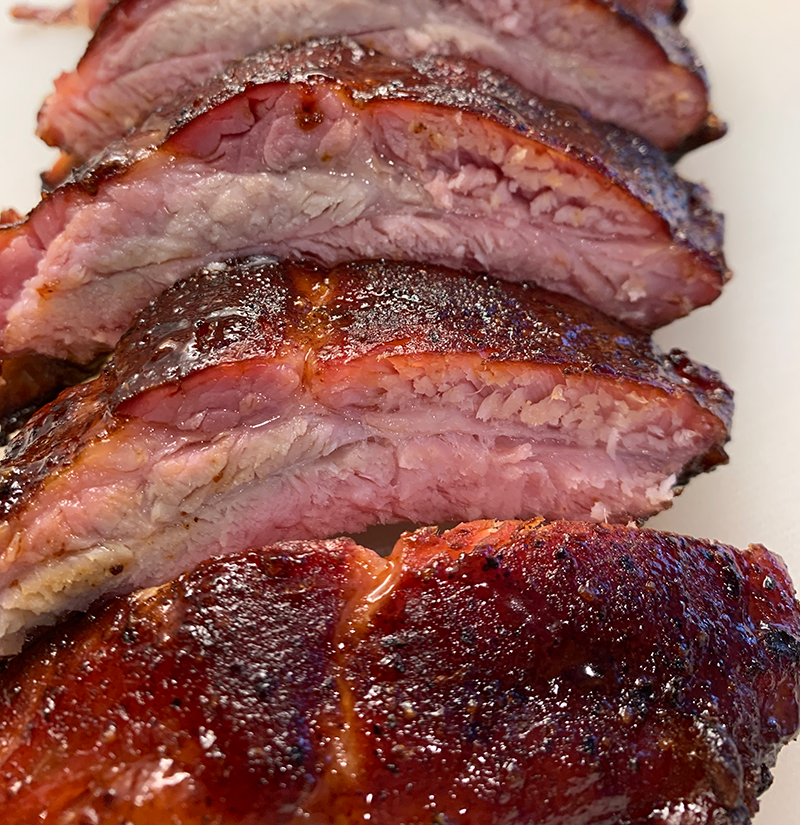
The Essential Roadmap to the Perfect Baby Back Rib Cook
Clean and trim 2 full baby back rib sections; peel the back side membranes like your grandfather taught you to do. Just to make them easier to handle, I usually spit each individual full rack into 2 more or less equal pieces.
Coat your ribs with your rub of choice and throw in the fridge for at least a couple of hours, removing 30-45 minutes before starting your cook.
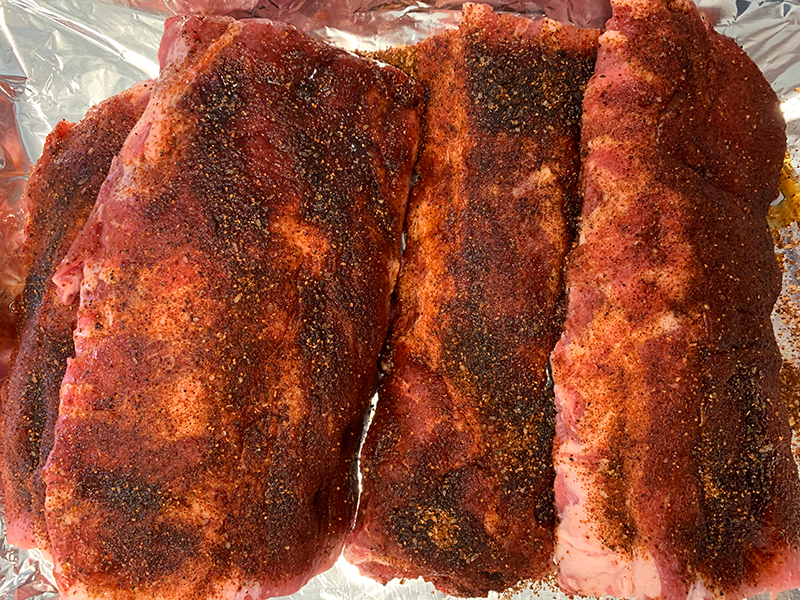
A quick thought on rubs – there are literally thousands available commercially, and if you do a bit of digging, they’re almost all built around a common formula – salt, sugar (or other sweeteners), and complementary spice arrays. By all means experiment, shop around, compare ingredients, and see what your family enjoys the most, though I’d encourage (if not demand) you to make up your own rubs to control the quality of ingredients and freshness of spices used. We have a go to rub recipe that we use on all sorts of meats, I need to share here on OBL one of these days…

Fire your smoker and heat to 225; being long time Texas folk, my lovely wife and I are partial to using pecan and/or oak for our rib cooks, though they’re great with cherry as well.
Place the racks in the smoker and cook for 3 hours at a steady 225; many aficionados insist that ribs should be spritzed very 30-45 minutes (liquid of choice, often apple juice, a secret mop recipe, or water and ACV mix). To be honest, most days we don’t do that around our camp as I’ve never really be able to see a meaningful difference with or without.
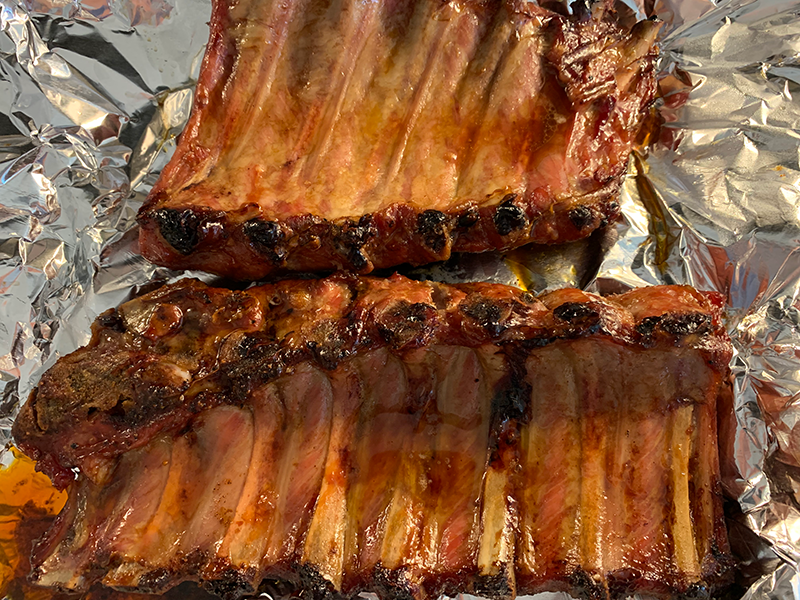
At three hours, pull the rib sections, place meat side up on a large piece of heavy duty foil, and brush with a braising liquid of choice – once again, there’s a huge amount of variation in what folks are using out there. When we’re really needing to make an impression, I’ll melt 4-5 tablespoons of grass fed butter and combine with an equal amount of organic honey, and brush that over the meat side and underside of each rack. Then wrap with the foil and seal snugly; by the way, I typically place the racks meat side down when in the foil to expose the meat to more of the braising liquids brushed on before wrapping.
Now the ribs go back on the smoker (or in the oven – they’re not absorbing smoke while wrapped of course) at 225 for 3/4 to a full hour; experiment a bit to see what produces the results you like the most.
When that cook has finished, carefully remove the ribs from the foil, sauce with the sauce of your choice (there are lots of nifty low carb and keto options out there, or better yet, make your own), and throw them back on the smoker for another 30-60 minutes, meat side up.
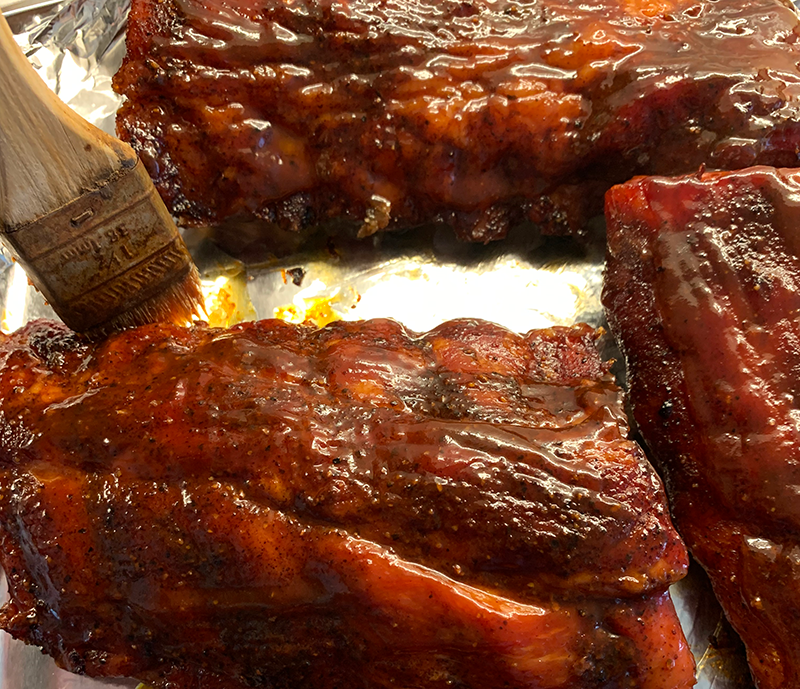
How Do I Know My Ribs are Done?
A quick confession is due here – I cook just about everything on the grill or in the smoker to internal temperature targets these days instead of using time; if you’re not you should be, and my food has never been better since doing so.
Ribs are probably the only protein we don’t cook to internal temp targets – it’s very difficult to get accurate internal meat temps given the thin bands of meat on pork ribs (baby backs more-so than spareribs) and the proximity of the rib bones.
That said, and pending a host of variables including the actual size/thickness of your rib sections, baby back ribs are typically done in 4-5 hours using this approach, and the thicker, fattier St. Louis Cut rubs or spare ribs will take 5-7 hours (consider using a 4-0.75-.5 hour run to start) to finish.
Finally, you’ll know your ribs are done to perfection when you perform a bounce test – pick up a rack with tongs and give it a gentle bounce – if the meat cracks along the edge of a bone – you’re in rib heaven and it’s time to eat.
Grab some ribs and git ‘er done this weekend.
Enjoy.
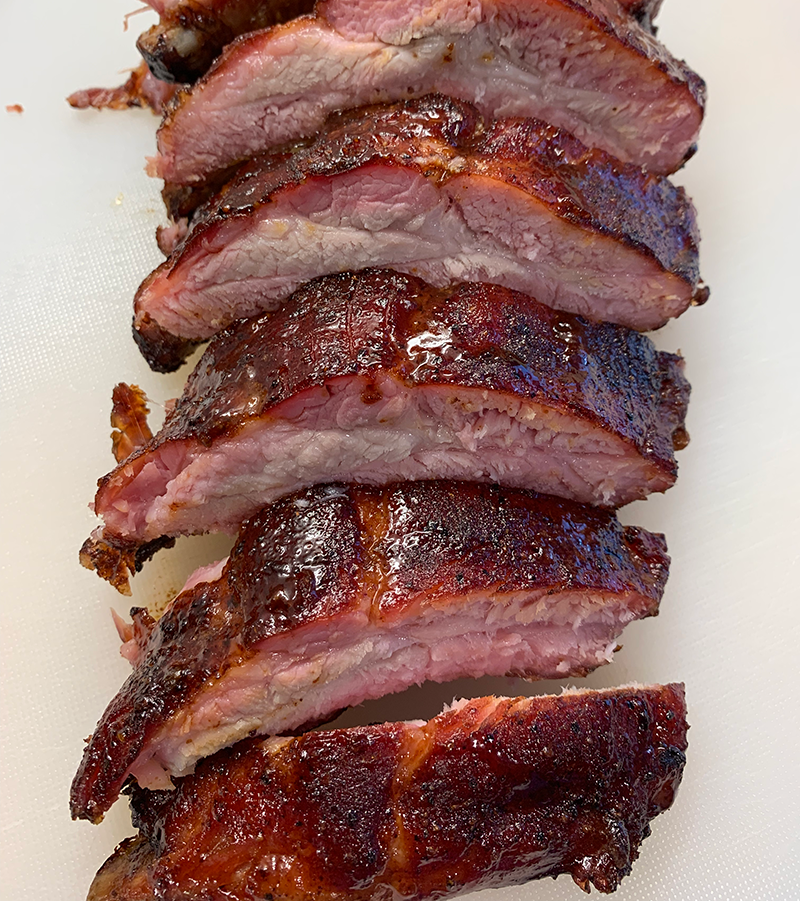



Leave a Reply